CEM Navigation
Use this menu to navigate to other parts within this CEM
References
Aceves, T.C., & Oroscio, M. J. (2014). Culturally responsive teaching (Document No. IC-2). Retrieved from University of Florida, Collaboration for Effective Educator, Development, Accountability, and Reform Center website: http://ceedar.education.ufl.edu/tools/innovation-configurations/
Anyon, J. (1980). Social class and the hidden curriculum of work. The Journal of Education 162(1), 67-92.
Aronson, B. & Laughter, J. (2016). The theory and practice of culturally relevant education: A synthesis of research across content areas. Review of Educational Research, 86(1), 163-206.
Center on PBIS. (n.d.) Multi-tiered system of support (MTSS) & PBIS. Retrieved from https://www.pbis.org/school/mtss
Center on Response to Intervention at AIR (n.d.). MTSS/RTI Glossary of Terms. Retrieved from: https://rti4success.org/resources/mtssrti-glossary-terms
Council of Chief State School Officers. (2018). Preparing “Learner-Ready” Teachers: Guidance from NTEP States for Ensuring a Culturally Responsive Workforce. Retrieved from http://www.ccsso.org/sites/default/files/2018-02/Preparing%20Learner-Ready%20Teachers.pdf
de Brey, C., Musu, L., McFarland, J., Wilkinson-Flicker, S., Diliberti, M., Zhang, A., Branstetter, C., and Wang, X. (2019). Status and Trends in the Education of Racial and Ethnic Groups 2018 (NCES 2019-038). U.S. Department of Education. Washington, DC: National Center for Education Statistics. Retrieved from https://nces.ed.gov/ pubsearch/
DiAngelo, R. (2018). White Fragility: Why It’s So Hard for White People to Talk About Racism. Boston: Beacon Press.
Dover, A. G. (2013). Teaching for social justice: From conceptual frameworks to classroom practices: Multicultural Perspectives, 15, 3-11.
Education Week (2018, January 25). Map: Minorities in Special Education: Which Districts are Out of Line? Retrieved from: https://www.edweek.org/ew/section/multimedia/map-minorities-in-special-education-which-districts.html
Garcia, S. B., & Ortiz, A. A. (2008). A framework for culturally and linguistically responsive design of response-to-intervention models. Multiple Voices for Ethnically Diverse Exceptional Learners, 11(1), 24-41.
Gay, G. (2002). Preparing for culturally responsive teaching. Journal of Teacher Education, 53, 106-116.
Gay, G. (2010). Culturally responsive teaching: Theory, research, and practice (2nd ed.). New York: Teachers College Press.
Glenn, C.L. (1989). Just schools for minority children. Kappan, 70(10), 777-779.
Gonzalez, N., Moll, L. C., & Amanti, C. (2005). Funds of knowledge: Theorizing practices in households, communities, and classrooms (1st ed.). New York: Routledge.
Hall, E. T. (1976). Beyond culture. New York: Random House.
Hansen, M., Levesque, E. M., Quintero, D., Valant, J. (2018, April 17). Have we made progress on achievement gaps? Looking at evidence from the new NAEP results. Retrieved from https://www.brookings.edu/blog/brown-center-chalkboard/2018/04/17/have-we-made-progress-on-achievement-gaps-looking-at-evidence-from-the-new-naep-results/
Howard, T. C. (2012). Culturally responsive pedagogy. In J. A. Banks (Ed.), Encyclopedia of Diversity in Education. Thousand Oaks: CA: Sage.
International Center for Leadership in Education. (2011). Supporting ELL/culturally and linguistically diverse students for academic achievement. Retrieved from: https://www.brown.edu/academics/education-alliance/teaching-diverse-learners/sites/brown.edu.academics.education-alliance.teaching-diverse-learners/files/uploads/ELL%20Strategies%20Kit_Intl%20Ctr%20for%20Leadership%20in%20Educ%202011.pdf
Ladson-Billings, G. (1995). Toward a theory of culturally relevant pedagogy. American Educational Research Journal, 32, 465-491.
Ladson-Billings, G. (2014). Culturally relevant pedagogy 2.0: a.k.a. the remix. Harvard Educational Review, 84, 74-84.
Ladson-Billings, G. (2015). Successful teachers of African-American children (video). Retrieved from: https://youtu.be/hmAZjNRmalI
Milner, H. R. (2010/2013). Start where you are, but don’t stay there: Understanding diversity, opportunity gaps, and teaching in today’s classrooms. Cambridge, MA: Harvard Education Press.
Miranda, A.H. (2014). Best practices in increasing cross-cultural competency, In P.L. Harrison & A. Thomas (Eds.), Best practices in school psychology (pp. 9-19). Bethesda, MD: National Association of School Psychologists.
National Association of School Psychologists. (2017). The importance of cultural competence. Retrieved from https://www.nasponline.org/research-and-policy/advocacy-tools-and-resources/communications-strategies-and-resources/school-climate%E2%80%94connectthedots/the-importance-of-cultural-competence
National Education Association (2017). Why cultural competence? Retrieved from http://www.nea.org/home/39783.htm/
National Education Association (NEA). (2018). Why cultural competence? Retrieved from: http://www.nea.org/home/39783.htm
Paris, D. (2012). Culturally sustaining pedagogy: A needed change in stance, terminology, and practice. Educational Researcher, 41, 93-97.
Paris, D. & Alim, H. S. (2014). What are we seeking to sustain through culturally sustaining pedagogy? A loving critique forward. Harvard Educational Review, 84(1), 85-100.
Staats, C., Capatosto, K., Wright, R. A., Jackson, V. W. (2016). State of the science: Implicit bias review. Columbus, OH: Kerwin Institute for the Study of Race and Ethnicity.
The Aspen Education & Society Program and the Council of Chief State School Officers. (2017). Leading for Equity: Opportunities for State Education Chiefs. Washington, D.C.: Authors.
The Aspen Institute. (2017). Glossary for understanding the dismantling structural racism/promoting racial equity analysis. Retrieved at https://assets.aspeninstitute.org/content/uploads/files/content/docs/rcc/RCC-Structural-Racism-Glossary.pdf
U.S. Department of Education, Office of Special Education and Rehabilitative Services, Office of Special Education Programs. (2018). 40th Annual Report to Congress on the Implementation of the Individuals with Disabilities Education Act, 2018. Washington, DC: Author.
U.S. Department of Education, National Center for Education Statistics, Schools and Staffing Survey (SASS), “Public School Teacher Data File,” 1987-88 through 2011-12; “Private School Teacher Data File,” 1987-88 through 2011-12; and “Charter School Teacher Data File,” 1999-2000; and National Teacher and Principal Survey (NTPS), “Public School Teacher Data File,” 2015-16. (This table was prepared September 2017.)
U.S. Department of Education. (2016) Non-Regulatory Guidance for Title II, Part A: Building Systems of Support for Excellent Teaching and Leading. Washington, DC: Author.
U.S. Department of Education, Office of Special Education and Rehabilitative Services, Office of Special Education Programs. (2007). Twenty-five years of progress in educating children with disabilities through IDEA. Retrieved from https://www2.ed.gov/policy/speced/leg/idea/history.html
Villegas, A. M. & Lucas, T. (2002). Preparing culturally responsive teachers: Rethinking the curriculum. Journal of Teacher Education, 53(1), 20-32.
White, L. A. (1959). The concept of culture. American Anthropologist, 61(2), 227-251.



